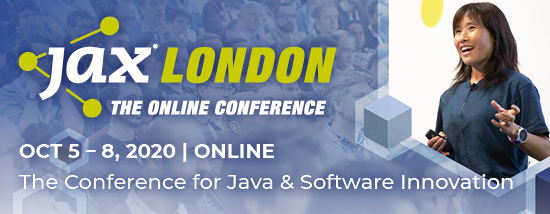Digital transformation sometimes involves getting rid of the old to make way for the new, but, more often than not, digital transformation is about modernizing legacy applications.
“Software vendors will tell you that the best way to modernize your application portfolio is to throw out the old and roll in the new,” said Christos Sotiriou, API Development Chapter Lead, Vodafone Greece. “Unfortunately, that isn’t always practical or wise.”
Unless a company has the means for a complete rip and replace of its technology, or is building the business from the group up, legacy systems must be considered as part of digital transformation efforts. And, well they should: Many organizations are running decades-old applications that also happen to be mission-critical. These applications are chugging along and doing their jobs. It doesn’t make sense to replace them, but it does make sense to update them.
SEE ALSO: How to Approach IT Operations Management Tools Consolidation
“Application modernization is the process of aligning legacy software to your current business needs, whether that means refactoring, rearchitecting, or replacing your applications,” according to Cap Gemini’s “Application Modernization” report. “Application modernization allows for greater agility, speed, scalability, reliability, and compliance, in addition to minimizing the in-house server footprint and the costs that come with it.”
Vodafone Greece, which creates and sells products both in the physical and digital worlds, leverages some platforms and solutions that utilize an older, less flexible stack. These include solutions for providing and registering user information, and for applying certain security policies on data storage. The solutions are connected most closely with Vodafone’s physical presence (such as stores and retailers).
Vodafone Greece wanted to move from monolithic architectures and physical presence to microservices and digital presence—no small feat–with a goal of digital-first, customer-centric journeys that enable customers to complete requests with a maximum of three actions.
At the heart of the project is Vodafone Greece’s Digital eXperience Layer (DXL). DXL was initially conceived as a solution to provide speedy data retrieval and hide complexity behind a REST API. DXL has evolved into a separate and semi-independent layer with microservice domains such as payment and customer profiling.
Along the way, Vodafone has learned a number of lessons about modernization:
1.) Never settle on solutions.
Vodafone has leveraged a number of technologies to update its systems, but it’s always looking for ways to make things even better.
For example, Sotiriou and his team started developing microservices with the Spring Boot Java-based framework, but they were concerned about Spring Boot’s resource consumption on the Kubernetes cluster and the effort required to work around it. This led Vodafone to turn to Quarkus, a container-first, next-generation Kubernetes-native Java stack.
“Quarkus has given us the performance and productivity boost we needed,” said Sotiriou. “We selected Quarkus over competing technologies because of the vast developer benefits, much lower resource consumption, number of trusted community members and the quick turn around of bug fixes and new features. Our team is now working on developing 20 microservices in the next three months, something that otherwise would have been an impossible task.”
2.) Transform business understanding in parallel with technical modernization.
According to another stakeholder in the organization, Evangelos Gongolidis, Technology Leader in Vodafone Innovus, “business should not act as an external stakeholder, but as an active part of the modernization process/working team. Goals, risk evaluation, and maintenance planning should be well-communicated and agreed to across the organization.”
3.) Security must always be top of mind.
Gongolidis also notes that security is a top concern for Vodafone Greece, “In fact, any new solutions and approaches designed to replace/upgrade older systems must first ensure that the flow of information and traffic is managed in a way that guarantees zero risk of a security compromise.”
4.) The show must go on.
Business continuity has been an important factor in all of Vodafone Greece’s modernization decisions. “We are not allowed to follow any modernization approach unless we are able to guarantee that, in parallel, we will be able to achieve our constantly changing business goals,” said Sotiriou. “Considering that many of Vodafone’s systems have a legacy of over a decade, Vodafone always wants to be able to incorporate solutions and make upgrades that do not disrupt the current user experience and at the same time allow gradual adoption.”
5.) Consider the customer.
Vodafone Greece has been very careful to take incremental steps toward modernization, delivering changes to customers one (small) part at a time. This has made it possible for Vodafone Greece to clearly articulate the value of the changes. “There is no point to running a modernization project if we can’t get customers to understand the improvements we are making,” said Sotiriou.
Vodafone Greece’s modernization efforts have paid off in a number of ways, including:
- Improvement in the speed of retrieval of certain information that Vodafone Greece’s mobile application needs to operate. Some screens of the application are now loading in just a few milliseconds, down from about 7 seconds.
- Greater flexibility in making fixes and updates. “We can update and deploy just a small part of our business, without worrying about breaking anything in the process,” said Sotiriou.
- Improved scalability in terms of processing power, since each component/business aspect is scaled independently.
- Greater flexibility, which has enabled the ability of Vodafone to work in parallel on several different projects–something a monolithic application would make nearly impossible.
SEE ALSO: Three ‘success’ metrics for software development
The last two points, said Sotiriou, have been very important during the pandemic, when systems experienced much higher load as customers used the organization’s digital offerings rather than relying on physical stores and resources.
And, according to Vodafone’s Technology Leader Evangelos Gongolidis, putting the customer at the heart of any modernization effort is key to achieving success:
“Usually, when a re-architecture/upgrade happens, it is happening to provide better maintainability, better performance, and reduced development and operational cost,” said Gongolidis. “However, in the digital era, we should have a clear and realistic customer-obsessed goal, as it is the most important part for application modernization and enterprise transformation.”
The post Out with the Old…In with Application Modernization appeared first on JAXenter.
Source : JAXenter

























